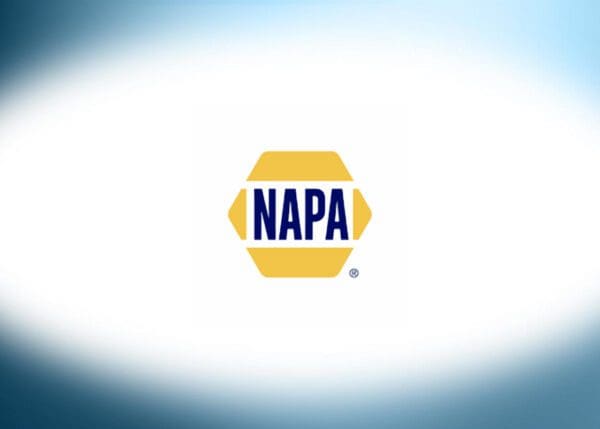01. History of Asbestos Use
NAPA History of Asbestos Use
NAPA was created in 1925 by a group of independent automotive part sellers. Their goal was to improve the sale and distribution of auto parts to consumers and small businesses.
Like many other automotive companies and manufacturers, NAPA used and sold products containing asbestos throughout the twentieth century. Some of the most common automotive products to contain asbestos include gaskets, clutch lining, brakes and brake pads. Handling these materials put NAPA employees and customers at risk of asbestos exposure.
NAPA expanded throughout the U.S. and globally over the years, putting more people at risk of exposure. The first NAPA-branded storefront opened in Atlanta, Georgia, in 1936. In 1966, the first NAPA-branded parts were introduced.
Since then, the company has continued to grow in part through a partnership with Genuine Parts Company (GPC). GPC is a large auto parts supplier and has been a primary NAPA contributor since its early years. As of 2012, GPC finished acquiring the other member companies and became the owner of NAPA.
Today, the NAPA distribution system is expansive. The company has more than 500,000 part numbers distributed across the United States, including in:
- 57 distribution centers
- 6,000 NAPA Auto Parts shops
- More than 16,000 NAPA AutoCare centers
The Fortune 200 company also has about 52,000 employees in 15 different countries.
The company’s large reach over the years suggests thousands of individuals risked asbestos exposure from its products. Around 1980, asbestos became more regulated. NAPA no longer uses asbestos in its products. However, NAPA Auto Parts stores may sell imported auto parts that may contain asbestos. As a result, consumers and mechanics may continue to risk exposure to asbestos.
Victims who develop asbestos-related diseases, like mesothelioma, may be eligible for compensation. Victims have filed successful lawsuits against NAPA and other asbestos companies.
Resources for Mesothelioma Patients
02. Asbestos Products
NAPA Asbestos Products
NAPA and GPC produced and sold numerous automotive parts. During the height of asbestos use, NAPA produced and sold auto parts that often contained the mineral. The durability and heat resistance of asbestos made it a popular choice for use in parts like gaskets and friction products like brake linings.
Though asbestos is more strictly regulated today, the mineral may still be present in older vehicles and parts, as well as in imported parts manufactured in other countries.
Some asbestos products sold by NAPA include:
- Brake linings
- Brake pads
- Brakes
- Clutch linings
- Gaskets
- Heat shields
- Insulation
- Mufflers
- Spark plugs
03. Occupational Exposure
NAPA and Occupational Exposure
NAPA was a leading seller of automotive parts during the time asbestos use was widespread. People who came into contact with the products this company sold risked asbestos exposure. Wear and tear, maintenance and repair of asbestos auto parts can cause asbestos fibers to become airborne. Airborne fibers may be inhaled and can lead to mesothelioma and other asbestos illnesses.
Working with asbestos automotive products put many individuals at risk of occupational asbestos exposure. Those exposed include auto mechanics, shop personnel and vehicle restoration technicians. Factory workers who manufactured brake pads and linings, gaskets, insulation and other auto parts may have also been exposed on the job.
At-home vehicle repair put consumers at risk from using asbestos auto parts. Families of workers and consumers also faced an increased risk of asbestos-related diseases, such as lung cancer and mesothelioma, because of secondhand exposure.
Visual inspection alone cannot indicate the presence of asbestos in brake or clutch components. Occupational Safety and Health Administration (OSHA) guidelines instruct mechanics to assume all brakes have asbestos materials. At-home mechanics should seek professional help when working with the possibility of asbestos and follow OSHA best-practice recommendations. These guidelines can help prevent exposure from working on automobiles.
04. Asbestos Litigation
Asbestos Litigation Against NAPA
NAPA and its owner, GPC, have faced asbestos lawsuits in recent years. Workers and consumers were injured as a result of using NAPA products and have sought compensation.
For example, a heavy equipment operator and car restoration hobbyist was diagnosed with peritoneal mesothelioma. He was exposed to asbestos for years from brakes, clutches and other auto parts he bought at a NAPA store near his home. The victim passed away at age 67.
His wife and family filed a wrongful death mesothelioma lawsuit against NAPA and GPC. A jury in Washington state found both companies negligent and liable for the victim’s asbestos-related death.
The court awarded his family $81.5 million in compensation – believed to be one of the largest verdicts awarded in the state.
NAPA and GPC continue to face lawsuits because of their products. In 2021, GPC and its subsidiaries faced approximately 2,018 pending product liability lawsuits. The company says many of these lawsuits involve claims of personal injury allegedly resulting from use of its automotive parts. Some of these lawsuits were asbestos-related, although it is unclear how many.
Asbestos exposure victims should talk to a mesothelioma lawyer to learn more about legal options available to them. Individuals who develop a related illness, or their surviving loved ones, may be eligible for compensation.




